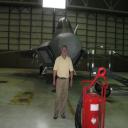Yahoo Answers is shutting down on May 4th, 2021 (Eastern Time) and beginning April 20th, 2021 (Eastern Time) the Yahoo Answers website will be in read-only mode. There will be no changes to other Yahoo properties or services, or your Yahoo account. You can find more information about the Yahoo Answers shutdown and how to download your data on this help page.
Trending News
why dont airline manufactureres make planes that can hover?
im a private pilot and i fly for fun all the time and enjoy take offs and landings on runways, but wouldnt it make more economical sense to make airliners that can hover? like if you could diconnect the jetbridge and have the plane take off right from the spot; and then land at their specific gate at their destination? Why waste more time and fuel waiting in line to take off, waiting in line to land on a runway, or holding for departing and arriving traffic on a taxiway? To me, if boeing or airbus could make an airliner that could take off and land from the gate they would make a crap load of money
18 Answers
- 1 decade agoFavorite Answer
The technology is too expensive and not quite there yet.
The British Harrier Jump Jet has been around for over forty years and it is a vertical/short takeoff airplane that somewhat hovers through thrust vectoring.. In other words, they direct the thrust from the planes engines underneath the plane to propel the plane into the air and make short take offs from aircraft carriers. The plane can hover for a few seconds, but once it is off the ground it has to move forward and climb to stay stable.
The problem is commercial aircraft are incredibly heavy and we have not figured out a method of obtaining the thrust to keep large objects in the air and stable. Most experimental hovering aircraft are very light and can barely support a pilot, let alone cargo. The only reason the Harrier can hover is because its engines are massive and the rest of the plane is small in comparison. Fighter jets are basically jet engines with wings and a cock pit on them.
Also, the amount of fuel used to taxi is insignificant compared to the amount of fuel it takes to keep a plane in the air for hours at a time. In fact, many airports are designing so the terminals are closer to the runways, to cut taxi times. Which means as more new, more efficient airports are built, the cost of taxiing to a terminal is going to be next to nothing for the airlines. There are better ways to save fuel. You would be surprised the different routes planes take that are many miles out of their way for one reason or another. Fuel costs are only a fraction of the overhead it takes to keep a commercial airline running. and usually airlines just raise rates when they need more money, which is much cheaper than buying new aircraft.
The cost savings of not taxiing versus the immense cost of the technology to create and build a plane that can hover is just not anywhere close to being feasible. Money drives innovation. The day hovering technology becomes feasible and cheaper than today's jet planes is the day you can hover from Philadelphia to DC.
- 1 decade ago
Ok, first of all, it's very dangerous to hover a plane. It could easily go out of control. It was hard enough making the Harrier a safe plane to hover. Imagine, trying to hover an 800,000 lb 747. It would need a lot more engines and planes would actually use more fuel taking off vertically than taking off normally. Also, could you imagine the thrust from the engines pointing downward? If you tried to takeoff a 747 vertically, the thrust would be enough to rip apart the tarmac and the airport below the plane. And I wanted to say, that whoever said something about engine torque...we're talking about planes, not cars! Jet engines have hundreds of times more torque and hp than car engines, so that wouldn't be a problem anyways. But, getting back to the point, if it ain't broke, don't fix it. There is no shortage of runway space at commercial airports, so why takeoff vertically, use more fuel, make a lot more noise, put hundreds of passengers' lives at risk, and destroy everything below you with the thrust?
Source(s): my brain - Anonymous5 years ago
trained paratroopers need 2 second to get out of the plane. count 3 for untrained people. abasndoning an airliner carying100 passengers would take 300seconds i.e. 5 minutes airliner are not suitable to fly at the speed 200 kmh that is only suitable for bailing out from the side doors. if the plane was flying 5 minutes stable it is better to perform forced landing than spread 100 people some of them probably wounded along a 17 km long trajectory/ if it was flying above mentioned 200kmh speed/. the circular canopy parachute weights some 7-10 kilograms /20pounds. adding 100*7 means additional 700kgs of weight that would travel all the time unused. not to talk about the fact that paratroops fly with their parachutes, they dont take them before the jump. how would you take on the parachute in an airliner together with another 100 people trying it??? finally speaking of the "hot seats" they are expensive bulky and need constant care. and are not comfortable at all. plus it would take again some 5 minutes to eject 100 seats with the 2 sec separation. Man have you ever tried a parachute jump? would you like your elderly paretns to do it? or your 5 years old daughter? Airliners are NOT designed to paradrop people, they dont have large enough doors, they dont have any tail ramps like Herc does they even don't have the anchoring equipment for the parachute trigger. and without the stabiliser, how manz UNTRAINED people do you think would be able to stabilize their free fall prior the parachute opening? yet in their business cloths, skirts? how many of them would hurt their legs when landing in their shoes? I say, well perfomed emergency landing gives the people the best chance for surviving. they will be in one place and that means they will be reached fastest. try searching for stressed first time parajumper with broken ankle along the 17 km long line, in a jungle or forest.
- 1 decade ago
Aircraft like the Harrier use a stupendous volume of fuel to hover. You have to maintain downward thrust equal to the weight of the craft, just to stay in place. A Harrier weighs about 15 tons and has slightly more than 15 tons of thrust. A 737 passenger jet is about 50 tons and has 19 tons of maximum thrust. The 737 would need at least 150% more thrust, without adding any additional weight, to vertically take off.
Source(s): http://en.wikipedia.org/wiki/Boeing_737 - How do you think about the answers? You can sign in to vote the answer.
- Tina LeonovaLv 61 decade ago
They can (e.g. Harrier).
They would be too expensive for anybody to buy and use. The cost of a few litres of Jet A while waiting for takeoff is insignificant compared to what it would cost to make a VTOL plane. And don't think vertical takeoff is free, either, it uses far more fuel than a conventional takeoff.
The "problem" they would solve does not actually exist. If it exists (debatable), it's not worth solving.
Harriers are very difficult to fly.
- mustangerLv 71 decade ago
The thrust needed to lift that much weight vertically isn't economically feasible. The Marines Twin Turboprop Stol can land that way but has to have a short roll to lift off with a load and it isn't any where near the weight of an airliner.
Source(s): Physics of lift. - capitalgentlemanLv 71 decade ago
There are VTOL and STOL aircraft out there, but it turns out that vertical takeoffs are VERY expensive! Even with the delays, it is still much cheaper, and economical fuel wise to use a runway. Short take of planes have some advantages, but they cannot build them all that large, due again to costs.
- Anonymous1 decade ago
Weight, complexity, cost and speed.
Helicopters are heavy and mechanically complex, meaning that you can carry fewer passengers, and must spend more time in maintenance, resulting in higher costs per seat.
Helicopters are limited to about 200 knots (350 for the V22), so you will find it difficult to get a helicopter to fly a Mach .85.
In a decade or so, tilt rotor aircraft will fill in niches for short haul transportation, but don't expect to see any vertical takeoff transcontinental aircraft for a lonnng time...
- Anonymous1 decade ago
Simple: The cost and engineering hurdles.
It's cheaper and safer to build them to fly the old fashioned way.
However, there are many looking at the civilian applications of an aircraft like the OV-22 Osprey.
- Pilsner ManLv 71 decade ago
You mean like on the Jetsons cartoon?
Maybe once we get the bugs worked out of the anti-gravitational generator, we can change the way we do business.
You don't think there would be any congestion or control problems with this kind of thing at airports like Atlanta, do you? Maybe some anti-collision force fields...
Not feasible at the moment.






